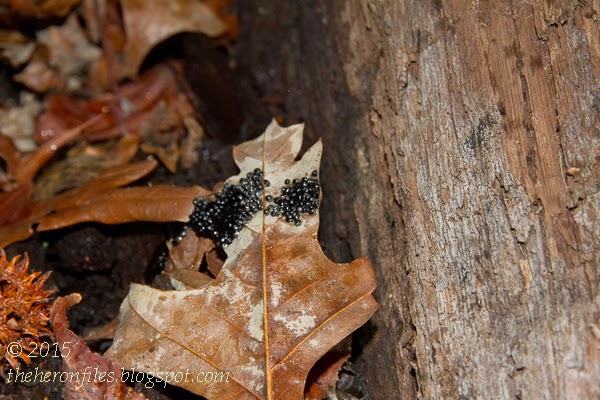The day before the round-up there was a mass movement of Franklin's Gulls through the area and even a report of a few cave swallows from the Chesapeake Bay Bridge Tunnel. So everyone is excited and ready to go.
We start our day at the beach at First Landing State Park. The first bird seen was an immature Bald Eagle. Always going to be a good day when you start with an eagle. There was a lot of movement out over the water but the air was cool and the wind brisk making the bird watching uncomfortable. We spotted the regular suspects but nothing unusual. A few people had reported the Franklin's Gulls from Pleasure House Point, nearby and a planned stop later in the day, so we change plans and head over there next to see if any gulls are still hanging out from the night before. It was Saturday morning so maybe they were nursing a hangover. We have a nice walk about to where we can see some sandbars on the Lynnhaven Inlet. There were several hundred gulls out there but none that we could make into Franklin's Gulls. There were a large number of Black Skimmers who should have been further south by now. This spot has had a group stay for the past few years so not unexpected but always nice to find.
There is also an Osprey feeding in this area. It flew overhead with a fresh catch. Notice how it is in the middle of orientating the fish to reduce drag. Pretty cool thing these Ospreys do.
As we headed back to the cars we heard a couple little chip notes and two of the party saw a bird flit across the marsh grass. We all quickly stopped and set down the spotting scopes so our hands were free for binoculars. After a few more calls we see a nice, orange-faced sparrow pop up.
Our next stop was back at First Landing State Park but this time on the inland side. We walk a trail through some bald cypresses and then up on a forested dune that overlooks the inlet. The first half of the walk was totally quiet in that we saw or heard no birds. Right before we turn around (the trail wasn't a loop so we had to backtrack at some point) we had a few birds. The one below threw us for a loop for a minute. When we first saw the bird it was backlit and looking away. We could see it was a sparrow but the mix of streaking on the breast and a breast spot didn't match anything expected. The bird finally turned towards us, and the camera, it showed itself as a White-throated Sparrow. First year birds can show the heavy streaking and the spot. I guess most of the ones that visit our yard must be older as neither Sharon nor I remember seeing.
On the way out we pasted a swampy area that slowly came alive with woodpeckers. We started out seeing a Yellow-bellied Sapsucker. It was followed by another sapsucker. Then a Pileated Woodpecker, and finally a flicker.
After a lunch in the resort part of town we drove down to Rudee Inlet which is a place frequented by unexpected birds. Again, not much unusual but we did see a pair of Purple Sandpipers and three female Red-breasted Mergansers. There were also several dolphins swimming and playing just beyond the jetty. At one point they were splashing their tails around and hopping out of the water. Quite a nice show.
Another stop at First Landing State Park found only this very cooperative Golden-crowned Kinglet. I particularly like the last one where it is trying to identify me.
We returned to Pleasure House Point at the end of t
Yeah, neither could we. And this was only about a fifth of the birds on the flats.
As we were packing up to call it a night, six wedges of tundra swans flew over. About 500 in all heading to warming, more inviting climes.
And with that, we also headed home to the warmth of our house and a well-deserved dinner.























































